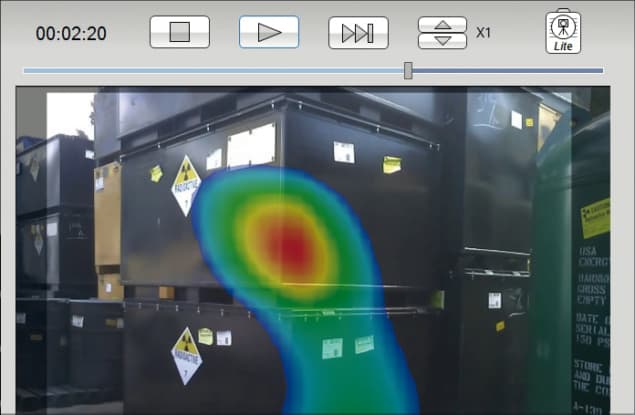Physics World August 8, 2019
Traditionally, workers have used hand-held meters to survey small areas methodically, square centimetre by square centimetre. This process is cumbersome, and it can also mean that technicians spend unnecessarily long periods of time in dangerous environments. An international team of researchers (UK, Japan) developed Hot Spot Locator (HSL) that images gamma radiation similar to the way digital cameras image visible light. Signals from an array of high-energy radiation sensors are coupled with a coded aperture, a collection of around a dozen pinholes, which the HCL’s deconvolution algorithms can interpret to create a true image of the hotspot, using a dynamic imaging mask which enables the coded aperture to rotate, allowing different patterns of radiological data to hit the sensor. After eliminating the background radiation, the data are overlaid onto a video camera image, resulting in a near real-time image of radiation contamination. The HSL is much more sensitive than pinhole cameras or Compton cameras of a similar size and weight, enabling it to detect levels of radiation five times lower…read more.

The middle container was believed to contain radioactive waste, while the bottom container possibly held radioactive residue. The HSL was placed 2 m from the containers and confirmed approximations of this in 2 minutes, 20 seconds. (Courtesy: Innovative Physics)